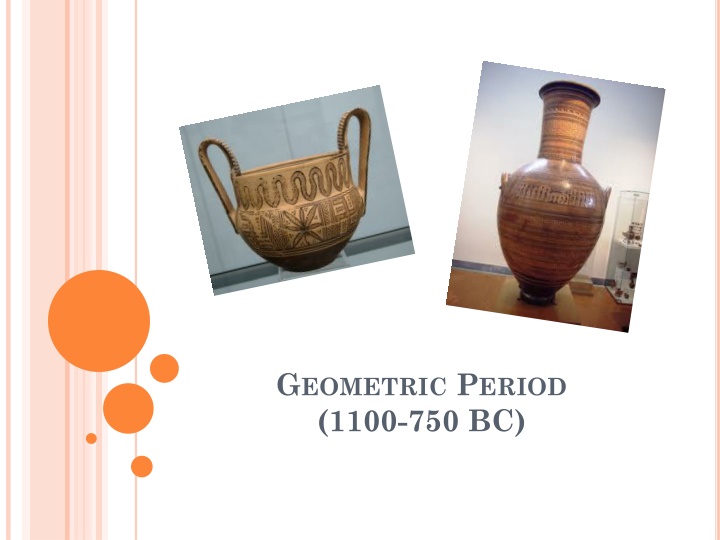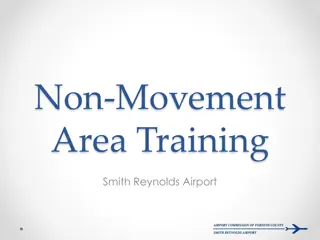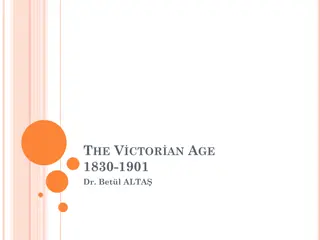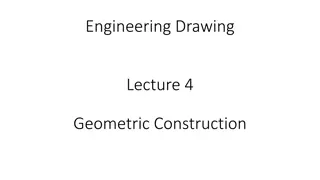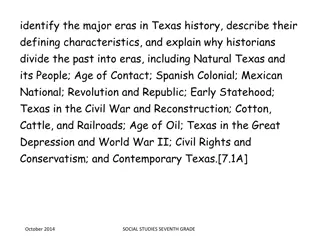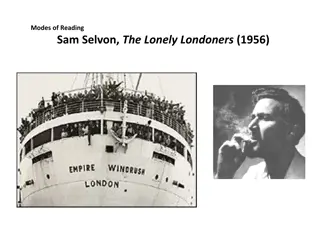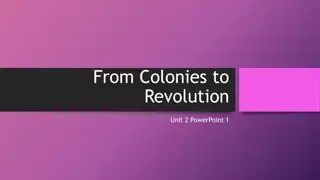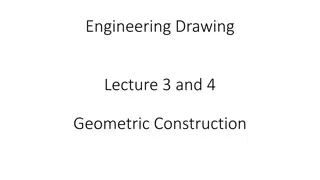Geometric Period (1100-750 BC): Age, Movement, Colonization, Economy
Geometric Period (1100-750 BC) marked by cultural shifts, population movements, Greek colonization, and agricultural evolution. Decline of Mycenaean centers, migration patterns, first Greek colonies, and the development of closed agricultural economies like oikos defined this era. Tags: Geometric, Period, Greece, Colonization, Economy
Download Presentation

Please find below an Image/Link to download the presentation.
The content on the website is provided AS IS for your information and personal use only. It may not be sold, licensed, or shared on other websites without obtaining consent from the author.If you encounter any issues during the download, it is possible that the publisher has removed the file from their server.
You are allowed to download the files provided on this website for personal or commercial use, subject to the condition that they are used lawfully. All files are the property of their respective owners.
The content on the website is provided AS IS for your information and personal use only. It may not be sold, licensed, or shared on other websites without obtaining consent from the author.
E N D
Presentation Transcript
GEOMETRIC PERIOD (1100-750 BC)
NAME & SOURCES Geometric Age ( Geometric decorative forms on vases) Also known as: o Homeric Age ( Homeric epic poems) o Dark Age or Greek Medieval Age ( At first limited knowledge & therefore considered as period of cultural decline) Historical sources: o Homer o Hesiod o Thucydides o Archaeological finds
MOVEMENT OF POPULATION 12thc. BC Decline of political & social authority of Mycenaean centers Thinning population Plunders by Nations of the Sea Search for better living conditions in lower levels by mountain tribes Movement of population (11th - 9thc. BC) First movements (beginning of 11thc. BC) o Thessalians (Thesprotia in Epirus Thessaly) o Boeotians ( Southern part of Central Greece) o Dorians (North-Western mountains Thessaly & finally Central Greece & Peloponnese)
FIRST GREEK COLONIZATION Middle of 11thc. 9thc. BC Aeolians: Thessaly Lesvos, Tenedos & opposite coasts of Minor Asia Ionians: South-Eastern Peloponnese, Attica, Euboea Cyclades, Samos, Chios & opposite coasts of Minor Asia (Panionion in Mycale) Dorians: Laconia, Epidaurus, Troizen Melos, Thira, Crete Rhodes, Kos & opposite coasts of Minor Asia (Doric Exapolis in Triopion of Knidos)
AGRICULTURAL ECONOMY & OIKOS Closed agricultural economy Personal property, consisting of arable land & breeding animals (especially cattle) Development of marine trade, by the landless (9thc. BC) First colonies & commercial agencies in Tyrrhenian Sea by Euboeans Depicted marine scenes & marine knowledge (Homer) oikos (= house): the basic economical & social unit, consisting of the members of a family (even of 3 generations) & its financial dependents (e.g. workers, slaves, etc.) Self-sufficiency of oikos Inner production & consumption of goods
AGRICULTURAL ECONOMY & OIKOS Limited exchanging trade, exchanging of presents, plunders & piracy Further goods (not locally produced) Value measured in cattle, animal skins, metals OR slaves Division of labor Distinction between sexes Diet based on meat, bread & wine (Homer) Beginning of poultry farming Use of horse only in war & hunting by nobles
SOCIAL & POLITICAL STRATIFICATION Trojan War: last significant war of Mycenaeans Attempt of nobles to abstract authority from kings (Homer: Thersitis, murder of Agamemnon, Penelope s suitors) Decline of Mycenaean kingdoms ( Lack of monumental buildings) Social groups: o Oikoi with many powerful members & large landowning Social group of nobles ( aristoi the best) o Mass of people not related by blood to oikos ( plithos - crowd) o Specialized craftsmen, financially attached to oikos ( dimiourgoi - creators)
SOCIAL & POLITICAL STRATIFICATION Tribal state Tribal hereditary kingdom, with a king elected & nominated by the Assembly of Warriors ( Agora ), a group also responsible for the most significant decisions Administration by a king - also military, religious & judicial leader - with the help of the Assembly of Elders Model of great men : brave in the battlefield, generous in their feasts & gifts & skilful speakers & negotiators Always members of noble social group
SOCIAL & POLITICAL STRATIFICATION Spoils as the basic aim of plunders Special honorary share for king & nobles, as reprisal for their bravery (Homer) Exchange of gifts of equal value among nobles or offering gifts as compensation for an insult, reward for a service OR courtesy for a visitor (Homer) Common law, based on religious & social rules Legal procedures, by which nobles solved issues of property & duty Punishment of homicide: family vendetta OR exile of murderer OR compensation in gold or other valuable material
RELIGION Worship centers in settlements OR on their limits OR sometimes far away from them (e.g. on mountains) Foundation of first sanctuaries, which became national worship centers Preservation of local gods Stabilization of twelve Olympian gods & goddesses & minor deities Worship of some heroes next to their graves
RELIGION Myths about creation of world, physical phenomena, aspects of human life, etc. Complicated system of religious ethical values Deification of human virtues & weaknesses Ritual ceremonies with memorial, appealing, preventing, or purifying character - Increase of offerings
RELIGION Cremation of dead on a pyre, set up at a different spot than the tomb Ashes and bones placed in a clay pot, buried in a simple pit, with other clay & metal offerings - Necked amphorae and kraters for men, and stamnoi for women Inhumation after 800 BC & decrease of precious offerings Oversized vases as grave markers in Dipylon cemetery
ARCHITECTURE & METALLURGY Apsidal & then rectangular houses with walls of unfired mud bricks, set upon rough-stone bases, and two-sloped roof, thatched on a wooden frame Settlements with houses built around bigger house of the king without any specific plan, at the beginning Plan with an open square for gatherings Parallel use of iron Manufacturing metal objects either by smelting molten alloy to a mould or by hammering Bronze figurines, helmets with cheek guards, rod tripods & three- legged lebets
POTTERY Use of rapid potter's wheel ( Better balance & shape) Concentric circles made with a compass Use of multiple brush Return of pictorial decoration, but under a strict stylization and abstraction - Narrative scenes, especially on big vases (e.g. burial ones) Geometric decoration with meanders, curves & zigzags or animals (especially horses)
SCRIPT & LITERATURE Creation & use of Greek Alphabetical Script (end of 9th beginning of 8thc. BC) Phoenician alphabet, after vocal assimilation & adding of vowels Homeric epic poems, written in dactylic hexameter & based on former heroic narrative songs of Mycenaean Age, sung in public or personal noble fests ( aoidoi rapsodoi ) Homeric hymns (33), written by different poets in dactylic hexameter
HOMERIC EPIC POEMS 1strecording in the middle of 6thc. BC (by Peisistratus in Athens) Language: Mixture of Ionian & Aeolian lingual forms Depicting life of heroes of Mycenaean Age BUT up to a point - mixed with elements of Homeric Age Iliad ( 16.000 verses): Story of conflict between Achilles & Agamemnon during Trojan War Mostly war scenes Promotion of physical power, fighting ability & virtue of bravery More sonorous language Odyssey (12.000 verses): Story of Odysseus, trying to return to Ithaca against Poseidon s will Promotion of new values such as resignation, endurance, family peace, mutual respect of men and women, conjugal love, children s love for father, beauty of nature & more mature acceptance of human fate More complicated & unexpected plot
ETHNIC CONSCIOUSNESS Signs of Greek national consciousness: o Common Greek alphabet o Rapid spread of epic poetry Gradual formation of idea of common Greek origin from the same heroic ancestors & promotion of Homeric ethic rules to human life o Cult of specific common gods o Olympic Games as meeting chance for all Greeks in the end of Geometric Age
